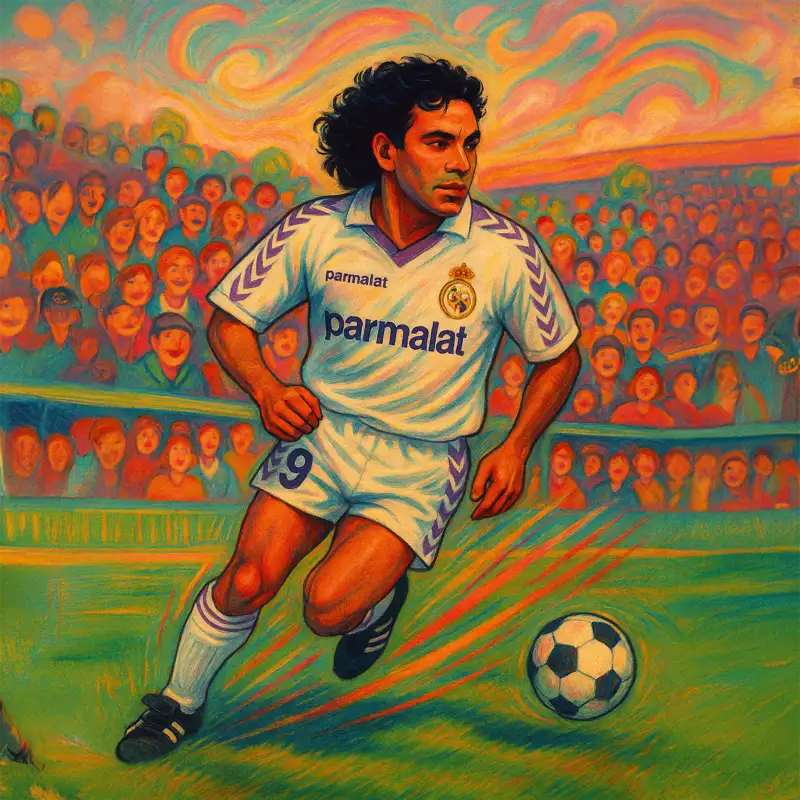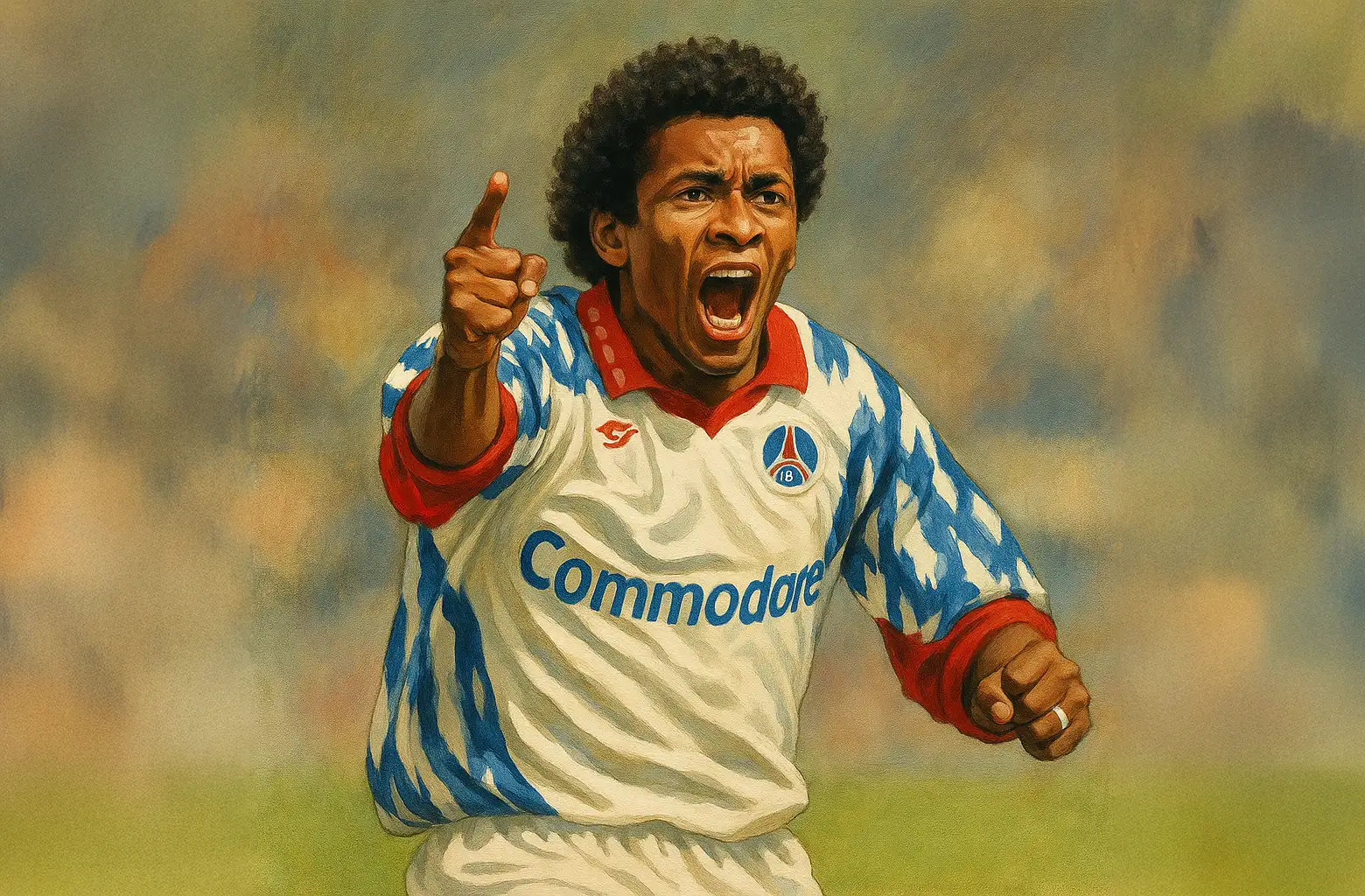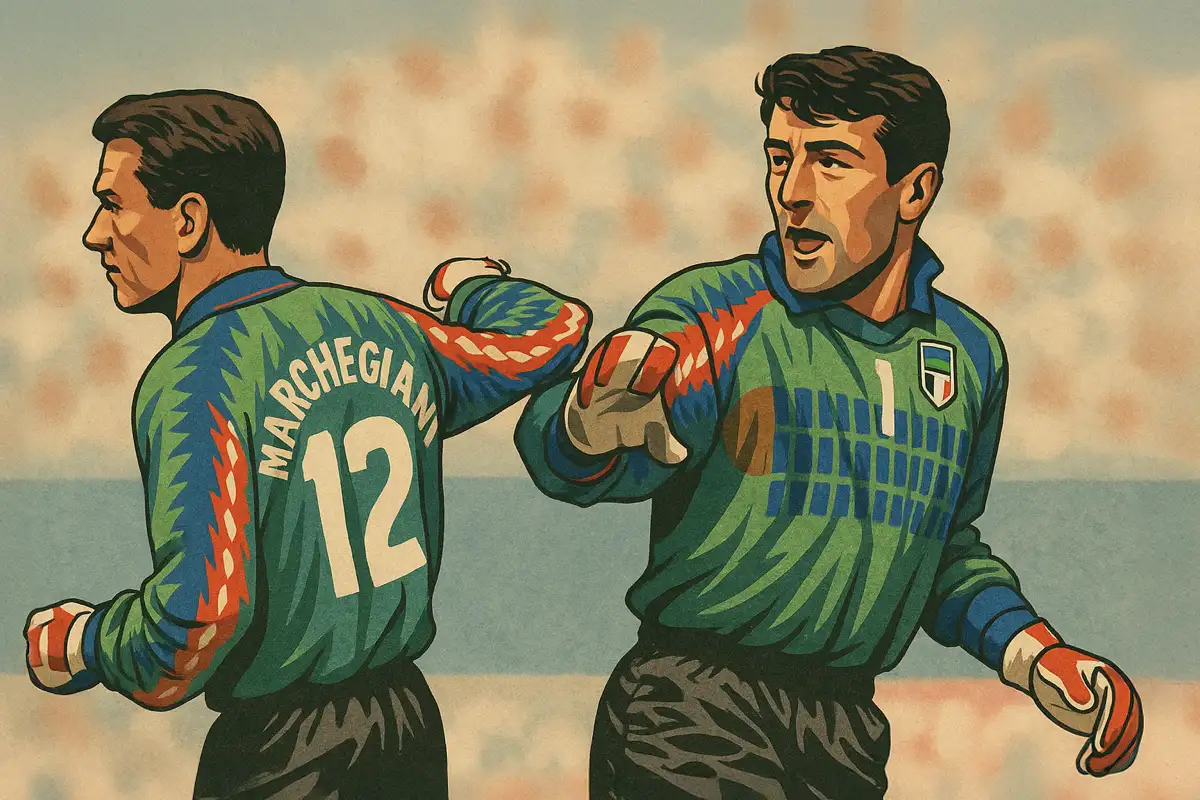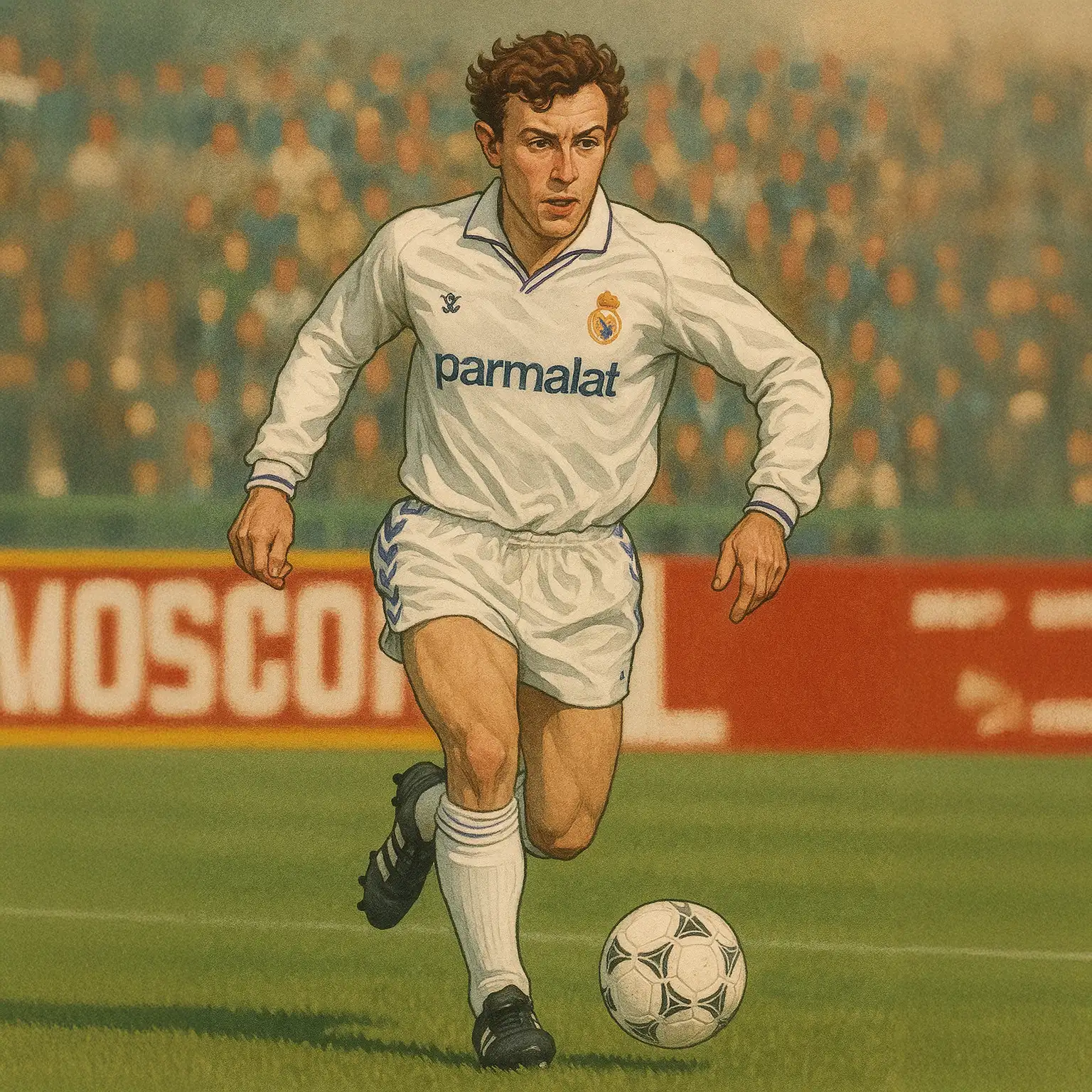
A while ago, a friend of mine sent me a message, saying:
“Did you know that all of Hugo’s 38 goals in the 1989/90 Spanish league were scored with one touch?”
I couldn’t believe it.
Let alone the fact that he had scored a staggering 38 goals in 35 games—matching a record that had stood for nearly four decades. But the real marvel? Every single one was scored with his first touch.
No one-twos, no solo dribbles. Just a perfect, surgical first contact. Right foot, left foot, header, volley. It was as if he had made a pact with the ball—one chance, one goal. Thirty-eight times.
Was it on purpose from the start? Did he realise halfway through and decide to go all in? Or was scoring “normal” goals simply too easy for him? The more I thought about it, the more mythical it felt.
So I watched them all. And what started as curiosity became obsession. I hadn’t truly seen Hugo Sánchez play—I was too young when he was at his peak. But now I couldn’t look away.
I needed to know more. And what I found was a story just as remarkable as that one-touch miracle. A career full of grit, audacity, style, and tragedy. A man who made goals fly and made millions dream.
From Pumas to the Podium
Hugo Sánchez Márquez was born on July 11, 1958, in Mexico City. From an early age, sport was second nature. His father, Héctor, had played professional football. His sister, Herlinda, became an Olympic gymnast and competed at the 1976 Games in Montreal. She taught Hugo balance, flexibility, and control. His bicycle kicks weren’t just theatre. They were gymnastics. His somersault celebrations were more tribute than showboating.
At 18, he joined Pumas UNAM, the professional team of Mexico’s National Autonomous University, where he also earned a degree in Dentistry while playing for the first team.
In his debut season (1976/77), he played 27 matches and scored 7 goals, helping Pumas win their first-ever league title. Just two years later, he claimed the league’s golden boot with 26 goals, forming a lethal partnership with Brazilian-born Cabinho.
In 1979, he had a brief loan spell in the NASL with the San Diego Sockers, during Mexico’s off-season — but Europe soon came calling.
From Mexico to Madrid
Sánchez represented Mexico at the 1976 Summer Olympics and then at the 1978 World Cup in Argentina. Mexico were eliminated early, but Hugo was just getting started.
In 1981, he signed for Atlético Madrid. It was a bold move. Many Latin players had wilted in Europe, but Sánchez adapted and, from his second season onwards, flourished. In the 1984/85 season, he won the Pichichi Trophy with 19 goals, leading Atleti to second place in La Liga.
Real Madrid—always watching—moved quickly. But a transfer between the two Madrid rivals had to be handled delicately to avoid fan backlash. So, on 4 July 1985, he was officially “transferred” back to Pumas in Mexico. A secret deal with Real followed, signed in a Mexico City bank. Fifteen days later, he was unveiled at the Bernabéu to 50,000 fans.
“
Who would dare? And these weren’t just tap-ins. They were scissor kicks, volleys, diving headers. Right foot, left foot, backheel.
The Pentapichichi Era
At Real Madrid, Sánchez became the focal point of one of football’s most elegant machines. He joined La Quinta del Buitre, the famed generation of homegrown stars—Emilio Butragueño, Míchel, Martín Vázquez, Sanchís, and Pardeza.
Together, they dominated Spanish football. Real Madrid won five consecutive league titles from 1985 to 1990, added the Copa del Rey in 1989, and lifted the UEFA Cup in 1986, defeating FC Köln 5–3 on aggregate.
Hugo Sánchez was their spearhead. A poacher, a showman, a predator of space. He won four straight Pichichi trophies during that run—and five in total. Hence the nickname: Hugol. Or, more fittingly, El Pentapichichi.
1989/90: A Symphony in First Touches
It remains one of the most astonishing seasons ever recorded by a striker. Sanchez was already 31 at the time. Thirty-eight goals in 35 games. None from the penalty spot. Every single one scored with a first-time finish.
No player had ever done that before—and no one has done it since. Who would dare? And these weren’t just tap-ins. They were scissor kicks, volleys, diving headers. Right foot, left foot, backheel.
He didn’t take a second touch because he didn’t need one. His movement was so perfect, so precise, he always arrived at the right time. And Real Madrid’s midfield—Schuster, Míchel, Martín Vázquez—delivered him masterpiece after masterpiece.
That season, Madrid scored 107 goals, won the league by nine points, and Sánchez won the European Golden Shoe, alongside Stoichkov – the Bulgarian was on his last season with CSKA Sofia, before moving to Barcelona in 1990.
It was the apex of elegance.

National Team: Glory, Grit and Frustration
Despite his club heroics, Sánchez’s international career was a mixture of pride and pain. He made 58 appearances and scored 29 goals, but his World Cup legacy is marked more by what could have been.
He played in three tournaments: 1978, 1986 and 1994. He missed 1982 because Mexico failed to qualify, and 1990 due to a FIFA suspension—after it was discovered that Mexico had fielded over-age players in a youth tournament.
His finest moment came at the 1986 World Cup on home soil. Under the magnetic Bora Milutinovic, Mexico marched to the quarter-finals—still their joint-best finish ever.
There, they faced a mighty West Germany side led by Franz Beckenbauer, packed with the core of the team that would lose the final against Argentina but would get payback by winning the World Cup four years later.
It was David vs Goliath in the heat of the Estadio Universitario in Monterrey. And Mexico stood tall. Hugo ran himself into the ground. The match ended 0–0.
In the penalty shootout, West Germany prevailed. But Mexico had won the world’s admiration. It remains one of the country’s most heroic football nights.
Sánchez returned again in 1993, aged 35, helping Mexico reach the Copa América final. He scored in a 2–0 semi-final win over Ecuador, before Mexico narrowly lost to Argentina.
His last international bow came in the 1994 World Cup. Already 36, he played only once—in a 1–0 defeat to Norway. It was a quiet end to a thunderous career.
The Farewell Tour
After leaving Real Madrid in 1992, Sánchez returned to Mexico with Club América. He had spells at Rayo Vallecano, Austria’s Linz, and even joined Dallas Burn in 1996, during the inaugural MLS season—making him, alongside Roy Wegerle, one of only two players to feature in both the NASL and MLS.
His final stop was a poetic one. He joined Atlético Celaya, linking up with former Madrid teammates Butragueño and Míchel. It was the last dance.
After the Applause
Sánchez became a coach and, in 2006, took charge of the Mexican national team. His coaching career never reached the heights of his playing days—but his symbolic value remained immense.
In 2014, tragedy struck. His son, Hugo Sánchez Portugal—himself a professional player with UNAM and Atlante—died at the age of 30 from a gas leak in his Mexico City apartment. It was a heartbreak that shook the country.
Legacy: The Master of Movement
Hugo Sánchez scored over 500 career goals. He lifted titles in Mexico and Spain. He mastered the bicycle kick—La Chilena—and gave it flair. His scissor-kick goals were known as Huguinas. His celebrations were gymnastics. His goals were works of art.
Today, his name doesn’t always appear in the “greatest ever” lists. But that says more about memory than merit.
For those who saw him, and for those of us who found him late, Hugo Sánchez was unforgettable. Not just because of his staggering stats. But because of how he did it.
He showed that you didn’t need to dribble past five men to be great. You just needed one chance, one connection, one instinct.
And if you ever see those 38 goals from 1989/90, you’ll know what I mean.

Valdo – provisory title
He dribbled like a dancer, played with a smile, and made chaos look beautiful. A rebel with the ball, and a genius no system could ever hold down.

Italy’s 90’s Goalkeepers – provisory title
He dribbled like a dancer, played with a smile, and made chaos look beautiful. A rebel with the ball, and a genius no system could ever hold down.

Emilio Butragueño – provisory title
He dribbled like a dancer, played with a smile, and made chaos look beautiful. A rebel with the ball, and a genius no system could ever hold down.

